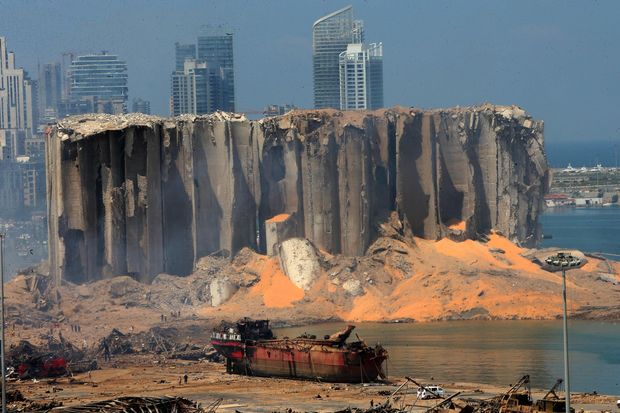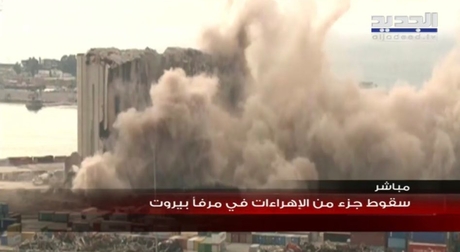A section of Beirut’s massive grain silos that withstood the 2020 explosion have collapsed following a weekslong fire. Its unclear if there have been any injuries.
Part of Beirut port’s massive grain silos collapsed on Sunday following a fire that has been burning for weeks.
Footage posted on social media platforms showed the section collapsing and causing a giant dust cloud in what sounded like an explosion.
Most of the port’s silos were severely damaged during the 2020 blast that rocked the city. The northern block, which collapsed on Sunday, had shielded the western part of the city from the explosion that killed more than 218 people and wounded over 7,000 others two years ago.
‘Everything is under control’ — port silo director
The General Director of the Port Silo, Assad Haddad, told The Associated Press news agency that “everything is under control.” But 2 weeks ago he was quoted as saying that the fires were not generating high enough temperatures to cause structural damage.

In July, a fire broke out in the 50 year old structure. Firefighters along with the Lebanese army were unable to douse the flames, which continued to smolder for weeks.
The fire led to city authorities warning nearby residents to remain indoors and seek well ventilated spaces.
Head of engineering syndicates blames the government for the collapse
Aref Yassin, the head of the Engineers Syndicate in Beirut, said in a statement to Al-Jadeed channel, that “the fire that broke out more than 3 weeks ago and was not extinguished is what brought us here and the rubble will not collapse at once.”
He pointed out that “the cost of demolition is high, and it should have been reinforced before the collapse, two years ago . We are discussing with experts, and there was a deliberate failure to deal with the fire, and the concrete and iron bars were weakened, which accelerated the collapse.”
“He pointed out that “the rubble will not collapse all at once, but in batches, part or parts will fall, and at any hour .
He blamed the government for the collapse
” My assessment is that what happened is illogical. It makes us suspicious of the government’s actions”. Mr Yassin said
Silos tilting 2 mm an hour
One week ago , Emmanuel Durand, a French civil engineer who volunteered for the government-commissioned team of experts said last week that the north block of the silo was “on path for catastrophic failure” and that a collapse was inevitable at this point. He told the AP the grain fire could not be extinguished by water, which actually fuels the process of fermentation and can make the silo tilt faster.
Durand, who is based in Switzerland, has been monitoring the silo for two years via sensors, and sending warnings to the government. The silo that have been tilting at no more than 0.5 millimeters a day two weeks ago are now moving at “cruise speed” with 2 millimeters an hour, he said.
DW/ AP/YL

Leave a Reply
You must be logged in to post a comment.